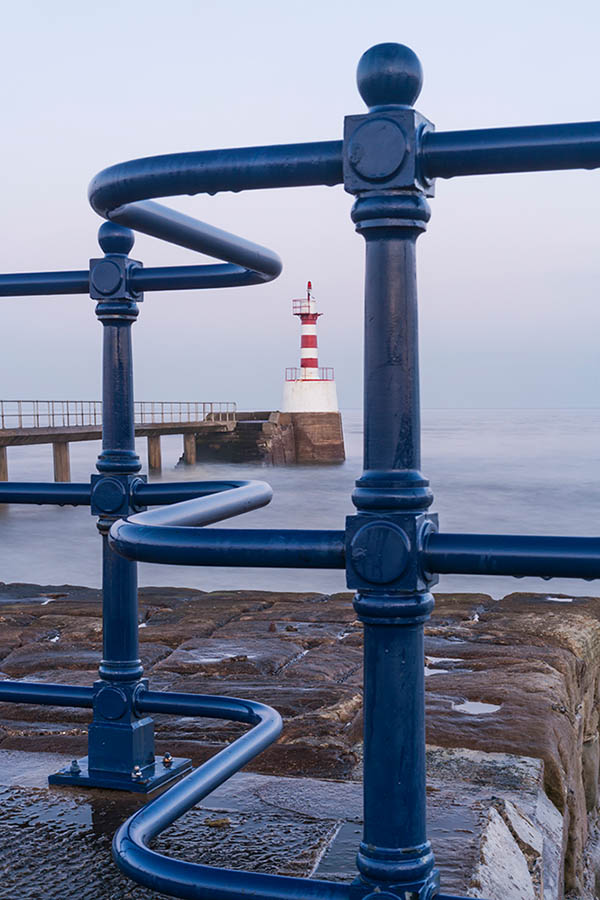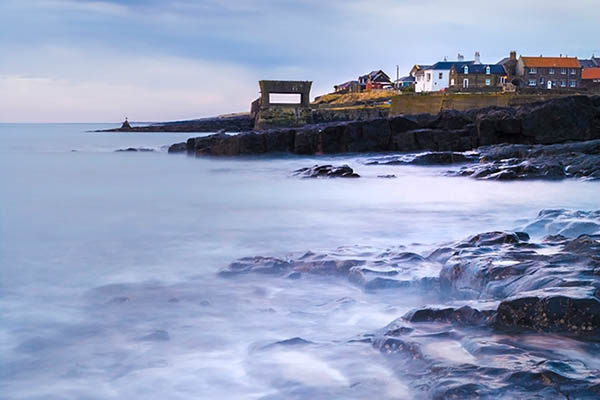The Holy Island of Lindisfarne off the coast of Northumberland is invaded on a regular basis during the summer months. At low tide the sea parts to reveal a road across to the island. Until the water returns, traffic streams to and fro across the causeway bringing visitors eager to see the religious sites, such as the Priory, for which the island is renowned.
In June 793 a less benign group of summer visitors came to Lindisfarne. In the ‘History of the Church of Durham’ Simeon the Monk recorded the arrival of a Viking raiding party: “On the seventh of the ides of June, they reached the church of Lindisfarne, and there they miserably ravaged and pillaged everything.” Many of the monks who lived on the island were drowned or put to the sword, and treasure was stolen from the church.
On the seventh of the ides of June, they reached the church of Lindisfarne, and there they miserably ravaged and pillaged everything…
Since that first Viking raid, the Northumberland coast has seen the full range of human history, from threats of invasion by hostile powers to the more gentle, more typical story of the local people trying to make a living from the sea.
Travelling north from the official start of the Northumberland coast, at St. Mary’s Island, means following a ribbon of industry and urban sprawl. It is only on reaching the seven-mile stretch of Druridge Bay that the coast truly becomes wild and free from metropolitan influence. The National Trust protects the centre strip of the bay, and an area is set aside as a nature reserve.

The fishing village of Amble sits at the mouth of the River Coquet and is known as the ‘Friendliest Port’. It earned this distinction when in the 1930s the RMS Mauretania passed the village on the way to be broken up at Rosyth. A telegram was sent to the ship, proclaiming it ‘still the finest ship on the seas’. A message was sent back, greeting the ‘last and friendliest port in England’.
North of Amble is Alnmouth, a quiet village at the head of the River Aln. It would take a leap of the imagination to believe that it was once a bustling port, busy with ships carrying grain to London and the continent. And yet, during the medieval period, this is precisely what it was. The town’s fortunes changed dramatically on Christmas Eve in 1806 when a violent storm permanently changed the course of the Aln. Without a harbour, trade quickly declined and the town ceased to be important commercially.
The most infamous practitioner of this black trade was ‘Wull Faa’
The dark side of Alnmouth’s former life was as a hotbed of smuggling. This charge was also levelled at Boulmer, a few miles on from Alnmouth. The most infamous practitioner of this black trade was ‘Wull Faa’, who in the 1700s ran his operation from the Fishing Boat Inn at the centre of the village. Faa’s speciality was the smuggling of whiskey and gin, a trade commemorated in a local rhyme ‘Jimmy Turner, of Ford didn’t think it a sin, to saddle his horse on a Sunday and ride to Boulmer for gin’.
Boulmer is now more widely known for the RAF station based near the village. During the Cold War the station was an Air Defence Control Centre, tasked with watching for the incursion into British airspace of Soviet long-range bombers. Since 1978 the station has also hosted 202 Squadron, a vital part of the region’s Air Sea Rescue service. The custard-yellow Sea King helicopters are a familiar and welcome sight along the Northumberland coast.
The firm of L. Robson and Sons have been smoking kippers in Craster since 1906
Pontefract has its cakes, Cheddar its cheeses, and Craster, the next village on our journey north, has its kipper. Craster kippers are a highly regarded delicacy. They have been endorsed by top celebrity chefs and are a source of culinary pride in the region. The firm of L. Robson and Sons have been smoking kippers in Craster since 1906 and the fourth generation of Robsons now runs the business.


